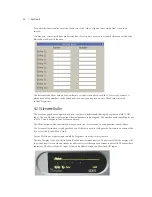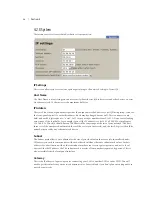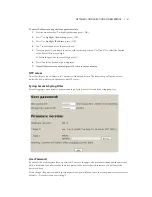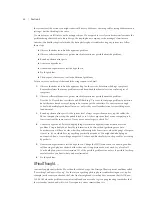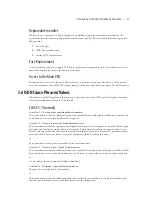
42
| Section 5
Note
It is normal for Euro-ISDN ETS300 lines to go to the Deactivated state when not used. If
the system can dial normally under these circumstances, this indication is not a cause for
concern.
Is the problem only with one BRI circuit or does it move when you switch lines around?
If the problem remains with the line, then call your Telco. On the other hand, if a line that
works in one interface fails to work in another interface of the same iQ6 then you have a
problem with your ISDN interface card (or possibly elsewhere in the iQ6).
The LED indicator of the status of the ISDN connection is on the rear panel near each of the
the U jacks. If the circuit is inactive, the LED will remain in the rapidly flashing state. This state
indicates a loss of the ISDN BRI circuit at the lowest (physical) level. Try another connecting
cable or another line.
If the NT1 can contact the central office, the LED will blink slowly (about 1 Hz). If the LED
remains in this state there is an internal ISDN problem or you could be connected to the
wrong jack on the back (Users in USA & Canada should be using the lower, RJ11 style jack).
The LED will come on solid when all handshaking is completed and the basic (low level) line
connection is good.
If the LED stays on, with the ISDN disconnected, or does not come on at all after cycling
power, there is a hardware problem.
Condition: Can’t Get ISDN Ready Indication
First try disconnecting the ISDN circuit(s) in question and waiting a full 60 seconds (leave the iQ6 on) and
then reconnect the circuit(s).
What kind of ISDN do you have, and is the iQ6 set to match it?
The telephone company should have given you the ISDN protocol when the line was ordered.
If you find yourself in the field without this information, it is usually possible to piece together
what you need.
♦
If you are given SPIDs, you probably have Natl ISDN 1 or DMS 100 for your ISDN protocol. One
SPID means one channel was activated, rather than the usual two.
♦
No SPIDs and only one phone number generally means AT&T PTP protocol. You must not have
SPIDs entered if using this protocol.
♦
In Europe, you have either ETS300 (EuroISDN) or the local protocol, such as ITR6 in Germany or
VN2 in France. The iQ6 only works with ETS300. In the case of Natl.I-1 or 2, and DMS-100 carefully
verify that you have the correct SPID from the Telco, and that you have properly entered it into the
system. It must be correct in order for anything to work! We’ve seen a few cases where it was given
incorrectly by Telco personnel, so it might be a good idea to re-check with them if things are pointing
in this direction.







